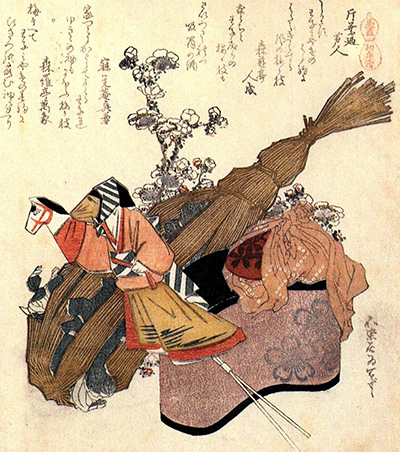Hokusai
A Hand Puppet by Hokusai
 A Hand Puppet, A Straw Container And A Sake Cup is a delicately imagined still life painting by the Japanese artist Hokusai, who lived in Edo (now known as Tokyo) in the eighteenth and nineteenth centuries.
A Hand Puppet, A Straw Container And A Sake Cup is a delicately imagined still life painting by the Japanese artist Hokusai, who lived in Edo (now known as Tokyo) in the eighteenth and nineteenth centuries.
This work of art depicts the three items described in the title, and it is executed using oil paints on canvas. This choice of medium marks a departure from Hokusai’s usual medium for his artworks which was ink and woodblock. Indeed, Hokusai was one of the pioneers of the Ukiyo-e style of ink and woodblock painting which was one of the hallmarks of Edo era Japan. This is not the only still life painting that Hokusai created during his career. He also created a still life arrangement dominated by a bowl of lip rouge, as well as a still life that features a leather pouch and a fan.
Hokusai’s choice of objects for his still life paintings is perhaps related to the subject matter of the Ukiyo-e genre of art. This genre focused on sumptuous, luxurious living and Hokusai’s works like A Hand Puppet show the viewer some of the objects that enabled contemporary dwellers in Edo to live a life of pleasure and leisure. The type of puppet depicted in the painting is known as a Noroma puppet. These puppets were typical of the Edo era in Japan and the first one was made in 1670. As such, A Hand Puppet is a work of art that is very much of its time.
This is an art work that can be approached in many ways. Of course, it is an appealing painting in its own right. However, this detailed depiction can also be considered to be a historical document that has preserved some of the trapping of affluent life in the Edo period. Thus, A Hand Puppet by Hokusai is valuable both for its aesthetic appeal and because it offers us a glimpse of how people lived in Japan in the early nineteenth century.